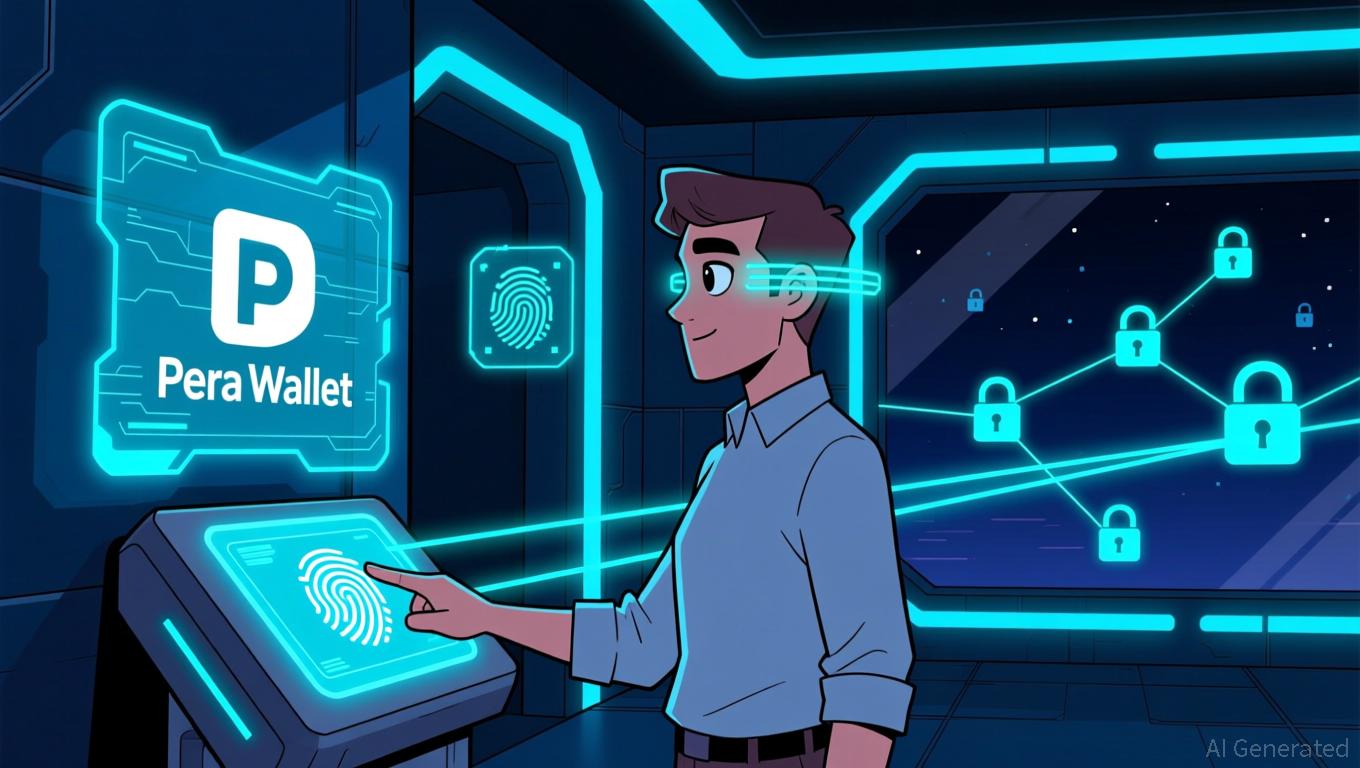Algorand Moves to Passwordless Security to Address Quantum Risks and Meet Regulatory Requirements
- Algorand launches passwordless login via Pera Wallet using FIDO2 standards to combat quantum threats and regulatory demands. - Industry trends show firms like AMI adopting post-quantum cryptography while Prisma AI develops AI-specific security tools. - Ledger explores NY IPO amid rising crypto storage demand, while BIO-key expands passwordless solutions in Middle East/Africa. - NIST/NCSC urge quantum-resistant algorithm migration, positioning passwordless tech as critical for financial/healthcare complia
Algorand, a blockchain network recognized for prioritizing both security and user-friendly design, has rolled out a password-free login option through its Pera Wallet. This enhancement is in line with the industry’s ongoing shift away from conventional passwords toward more advanced authentication solutions, especially as quantum computing and regulatory changes reshape the cybersecurity landscape, according to a
This development mirrors broader trends in both the crypto and cybersecurity industries. For example, AMI has recently adopted post-quantum cryptography (PQC) in its firmware to prepare for potential quantum threats, as covered in the

BIO-key International, a company specializing in identity and access management, has also broadened its presence in the Middle East and Africa by partnering with VaporVM. This collaboration promotes passwordless solutions such as FIDO2-based Passkey:YOU and PIN systems that do not require tokens, as outlined in the
The integration of passwordless login in Pera Wallet supports Algorand’s larger mission to streamline the onboarding process for newcomers while upholding robust security. By eliminating the need for users to remember complicated passwords, the platform seeks to make entry easier for a broader audience. This strategy is similar to that of other companies, such as Phantom Wallet, which has focused on
Regulatory requirements are also driving the adoption of passwordless systems. International bodies like the U.S. National Institute of Standards and Technology (NIST) and the UK’s National Cyber Security Centre (NCSC) have recommended that organizations assess their cryptographic resources and transition to quantum-safe algorithms, as referenced in the
As the sector advances, the integration of AI-powered security, quantum-resistant encryption, and passwordless authentication is set to shape the future of digital infrastructure. Algorand’s recent update, together with innovations from peers and collaborators, marks a maturing market where both security and ease of use are becoming standard expectations.
Disclaimer: The content of this article solely reflects the author's opinion and does not represent the platform in any capacity. This article is not intended to serve as a reference for making investment decisions.
You may also like
Bitcoin News Today: The Major Transition: Bitcoin Mining Companies Evolve into Leading AI Infrastructure Providers
- Bitcoin miners shift to AI infrastructure as margins shrink due to rising energy costs and post-halving challenges, with companies like Core Scientific and Cipher Mining repurposing data centers for AI workloads. - Major contracts, including a $5.5B, 15-year AWS deal and a $9.7B Microsoft agreement, highlight AI’s 25x higher revenue per megawatt compared to Bitcoin mining, driven by stable demand from tech giants. - The pivot reshapes market dynamics, with AI-focused miners outperforming Bitcoin peers as

Fed's Decision to Hold Rates Puts Spotlight on Balancing Trump’s Growth Plans and Inflation Concerns
- The Fed may pause rate cuts in 2025, balancing Trump's policy risks against inflation and economic resilience. - JPMorgan's Karen Ward highlights uncertainty over Trump-era growth vs. inflation, contrasting Wall Street's rate-cut expectations. - Powell emphasizes "strong" economic performance as a reason to delay cuts, with CME FedWatch showing 58% chance of December 25-basis-point cut. - Regional Fed leaders like Bostic and Williams stress inflation risks and cautious reserve management amid leadership
SEC's Token Classification Seeks to Harmonize Innovation with Safeguarding Investors
- The SEC proposes a token taxonomy under the Howey Test to classify digital assets as securities or non-securities, reshaping crypto regulation. - The framework categorizes tokens into four tiers, including securities, digital commodities, collectibles, and tools, with exemptions for non-SEC-regulated platforms. - It aligns with the Digital Asset Market Structure Bill, which assigns major cryptocurrencies to CFTC oversight and mandates exchange function separation. - The SEC emphasizes strict enforcement

Bitcoin News Update: Altcoins at a Turning Point—Innovation Meets Uncertainty as AI, DeFi, and Global Politics Influence 2026
- AI-driven DeepSnitch AI (DSNT) and Bitcoin Hyper (HYPER) lead crypto innovation, combining blockchain analytics with real-time risk detection and Layer-2 scalability solutions. - DeFi projects like RentStac (RNS) and Digitap ($TAP) anchor digital assets to real-world utilities, with RNS targeting $27.45M via tokenized real estate and TAP expanding financial access for unbanked populations. - Geopolitical tensions escalate as China-US clash over a $13B Bitcoin hack, while institutional moves like Metaplan